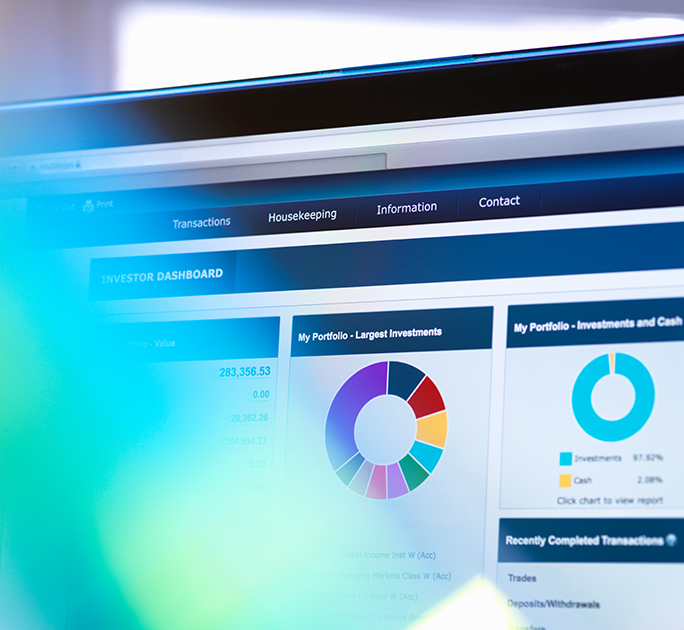Investing in gold
By Navin Sregantan
![]()
If you’ve only got a minute:
- An advantage of investing in gold is that it is a “risk diversifier”, a hedge against inflation and a safety asset.
- There are 3 main ways to invest in gold: physical gold, buying into ETFs and unit trusts, and through robo-advisors.
- Gold ETFs and unit trusts are a low-cost and liquid option for investors looking to add the precious metal into an investment portfolio.
Throughout human history, gold has been prized as both a valuable commodity and a measure of wealth, often passed down through generations as family heirlooms.
While the jewellery industry accounts for almost half of global gold demand, its use extends far beyond consumer goods. Gold also plays a vital role in electronics manufacturing and has a long history as a backing for fiat (government-regulated) currencies.
As a part of the alternatives asset class, gold plays an important role in well-diversified investment portfolios for a number of reasons including a shelter from volatility and a hedge against geopolitical risk.
Gold had a stellar year in 2024, surging over 25% — its best performance in 14 years and outpacing all major asset classes.
Last year, persistent buying by central banks globally and strong investor demand offset weaker consumer demand, resulting in gold's strong performance. This was further supported by heightened geopolitical risk, a year full of elections, periods of low yields and a weakening US dollar.
DBS Chief Investment Office (CIO) is of the view the long-term investment case for gold remains clear and compelling in 2025 for a number of reasons.
The includes the high likelihood that the US fiscal deficit is expected to grow during Donald Trump’s second presidency. This is positive for gold as rising US indebtedness affects investor perception of risk and the US dollar..
DBS CIO’s end-2025 price forecast for the yellow metal is US$2,835 per ounce.
Read more: What are alternative investments?

5 factors that make gold an attractive investment
Before investing in gold, it's helpful to delve into the key factors that make it an attractive investment.
1. A “risk diversifier”
Gold is often viewed as a risk diversifier given it is generally uncorrelated with other assets in an investment portfolio. For example, when stock markets decline (a typical characteristic of volatility), gold prices may rise, providing a portfolio hedge and reducing overall portfolio risk.
This belief has held through in previous recessions. What’s more, gold is highly liquid, which means investors are often able to cash in on their holdings with ease.
The importance of holding gold in an investment portfolio is more obvious in the past 5 years as global markets experienced heightened volatility.
Read more: Diversify to help manage investment risks
2. It is seen as a hedge against inflation
A common reason for investing in gold is the belief that it makes a good hedge against inflation. In general, gold prices tend to rise when the cost of living increases.
Moreover, investors buy or hold larger quantities of gold when high inflation is anticipated. This is driven by gold’s inherent value coupled with its finite supply. As such, it has proven to better retain its value than currencies – paper money.
This also held true during the Covid-19 outbreak where the low-interest rate environment was coupled with quantitative easing measures by central banks. The opportunity cost of holding gold in this environment is almost zero, while historical data shows average return is not compromised but gold’s downside can be smoothened.
Bloomberg economics estimates that for every US$20 increase in price of oil, US inflation will rise by 1 percentage point. In February 2022, the inflation in the US was 7.9%, and according to DBS CIO, it could easily hit 10% in future. Gold typically performs well in a hyperinflationary environment.
3. Weakness in the US dollar
Like most commodities, the price of gold has an inverse relationship with the US Dollar as it is dollar denominated.
Like most commodities which are US dollar denominated, the price of gold has an inverse relationship with the greenback.
With the US central bank - the Federal Reserve – turning to unlimited quantitative easing after lockdowns brought about by Covid-19 in 2020, the US dollar depreciated against a number of major currencies, especially the euro.
In previous periods of prolonged US dollar depreciation, investors have often turned to purchasing gold, a secure asset to preserve their purchasing power.
Read more: What should I do with my foreign currency?
4. Safe haven demand
Gold is viewed as a crisis commodity as its price increases in both periods of financial uncertainty and political uncertainty.
During periods where geopolitical tensions are prevalent, some investors have turned to gold as a secure holding. The yellow metal often performs better than other asset classes in this environment.
Gold functioning as an effective geopolitical hedge stems from the view that the precious metal is useful for countries when they are faced with threats of US sanctions.
5. Increasing demand meets decreasing supply
Increasing wealth in emerging economies has resulted in higher demand for gold along with more interest by investors. With mining volumes generally falling over the past decade, gold prices could stay supported.
Furthermore, ongoing central bank gold purchases reflect a wider geopolitical trend of diversifying foreign exchange reserves and increasing holdings of neutral, hard assets, according to DBS CIO.

Ways to invest in gold
There are a number of ways to purchase or invest in gold. Of which, the 3 below are the most practical options for retail investors.

Investors typically purchase physical gold as bars or coins, storing them at home or in a bank safe deposit box. Alternatively, some financial institutions offer gold certificates or savings accounts, eliminating the need for physical delivery.
You can also invest in gold mining companies, which are viewed as proxies to gold performance. Investors can benefit from share price appreciation as well as dividend payouts.
However, share prices of gold miners do not directly track gold prices. Factors such as operational efficiency, profitability, and — for smaller miners — by their ability to discover and have productive mining operations significantly influence their share performance.
Investors can gain exposures to both Gold ETFs and gold mining stocks which are available on SGX using cash, the Supplementary Retirement Scheme as well as Central Provident Fund (CPF) Ordinary Account and Special Account savings. Investments on foreign traded gold ETFs and gold miners are also available through DBS Online Equity Trading and DBS Vickers.
More sophisticated investors may consider implementing investment strategies using options on gold futures. However, this strategy involves substantial risk, including the potential for losses exceeding the initial investment, and is therefore not suitable for all investors.
Picking a Gold ETF
Retail investors are best placed to purchase gold ETFs with a good balance cost and liquidity.
A couple of common options are:
SPDR Gold Shares ETF
This ETF is a popular choice as it trades on the SGX and purchased through all brokerages in Singapore. Moreover, it is 1 of 6 ETFs and the only Gold ETF where CPF funds can be used for investing. Expense ratio for this ETF is 0.4% per annum (p.a.) with a lot size of 1 unit.
iShares Gold Trust
iShares Gold Trust has one of the lowest expense ratios (0.25% p.a.) and is the second-largest Gold ETF. This not only makes it easy for investors to enter and exit the fund but it is attractive in terms of the trade-off between size and fees too.
Picking a unit trust with exposure to gold
Another option is to consider investing in a gold-focused unit trust. For example, the Ninety One GSF Global Gold Fund gives investors exposure to gold mining majors and juniors. This fund is also one of the DBS Focus Funds for 1Q25, a shortlist of positively rated funds, that are aligned with DBS’s investment views.
Read more: Investing in unit trusts in Singapore
Find out more about: DBS Focus Funds
Investing through robo-advisors
With robo-advisors gaining popularity among retail investors, they are a viable option for those who would like to gain exposure to the yellow metal through a managed portfolio.
All you have to do is select a robo-advisor that has allocations to gold as part of its investment strategy. Many robo-advisors with a diversified, global focus, have exposure to the yellow metal through gold ETFs and/or gold miner ETFs.
With DBS digiPortfolio, investors of the Global Portfolio at all risk profiles get exposure to gold miners through the VanEck Vectors Gold Miners ETF. This ETF tracks the NYSE Arca Gold Miners Index, which serves as benchmark for the overall performance of companies involved in the gold mining industry.
Read more: digiPortfolio - A robo-advisor for all
Find out more about: DBS digiPortfolio
In summary
Given its status as a safe-haven asset, investors often have gold in their investment portfolios to diversify risk while also serving as a hedge against inflation.
It is important to note that while gold can offer portfolio diversification and risk reduction, it's not a guaranteed protection against all market downturns. Its price can still be influenced by various factors, and its returns may not always be positive.
Therefore, it's essential to consider gold as part of a diversified investment strategy, rather than a sole protection against market volatility.
Before deciding whether to invest in gold, it is important that you consider risk tolerance, your investment time horizon and market outlook for the yellow metal, among others.
Ready to start?
Need help selecting an investment? Try ‘Make Your Money Work Harder’ on digibank to receive specific investment picks based on your objectives, risk profile and preferences.
Invest with DBS Invest with POSB
Speak to the Wealth Planning Manager today for a financial health check and how you can better plan your finances.
Sources:
DBS CIO, "CIO Insights 1Q25: Game Changers" (13 Dec 2024). Retrieved 6 Jan 2025.
DBS CIO, "Alternatives 1Q25: Gold – Resilience with Alternatives" (20 Dec 2024). Retrieved 6 Jan 2025.
World Gold Council, “Gold’s 2024 performance best in 14 years” (3 Jan 2025). Retrieved 7 Jan 2025.
Disclaimers and Important Notice
This article is meant for information only and should not be relied upon as financial advice. Before making any decision to buy, sell or hold any investment or insurance product, you should seek advice from a financial adviser regarding its suitability
All investments come with risks and you can lose money on your investment. Invest only if you understand and can monitor your investment. Diversify your investments and avoid investing a large portion of your money in a single product issuer.
Disclaimer for Investment and Life Insurance Products








That's great to hear. Anything you'd like to add? (Optional)
We’re sorry to hear that. How can we do better? (Optional)